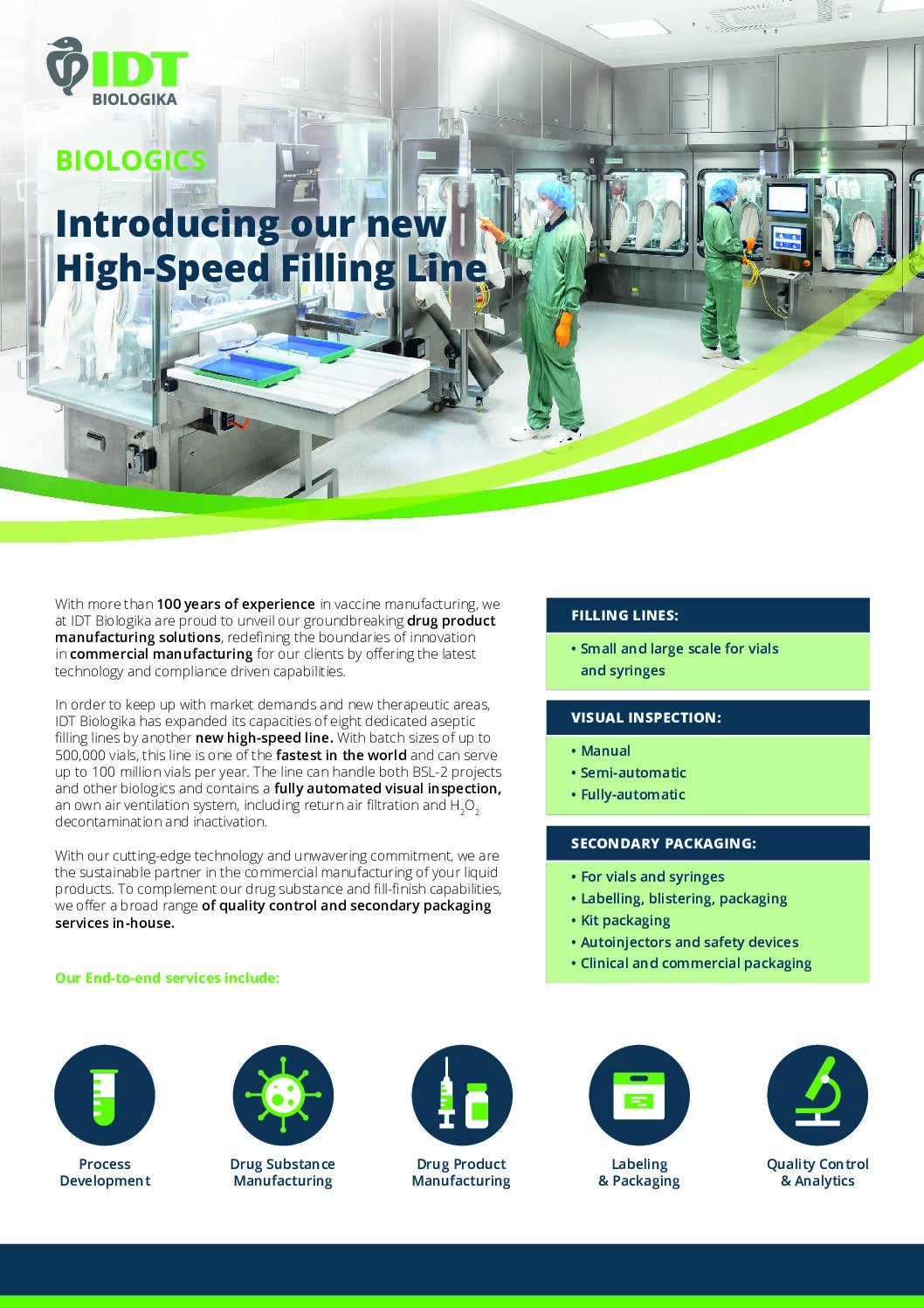
Annex 1 regulations refer to a set of guidelines from the European Medicines Agency (EMA) for the manufacture of sterile medicinal products, as part of the larger EU Good Manufacturing Practice (GMP) framework[i]. Fully applicable since August 2024, these regulations are critical for maintaining high standards in the manufacturing processes of pharmaceuticals, ensuring that products are consistently produced and controlled according to quality standards.
The Annex 1 regulations serve as a critical component of the pharmaceutical manufacturing landscape, focusing on quality assurance, risk management, and compliance with established legal frameworks. By adhering to these regulations, manufacturers can enhance the safety and efficacy of pharmaceutical products.
Maik Möller is a former business lawyer who has been working at IDT Biologika GmbH (IDT) since 2016 as an expert in IDT´s Quality Systems department. His responsibilities include communication with authorities and managing the regulatory compliance process. Part of his duties involve the permanent monitoring of new GMP regulations and assessing their relevance and criticality for IDT.
Can you briefly explain what Annex 1 regulations entail, and their significance in the pharmaceutical industry, particularly in the context of sterile medicinal products?
Maik Möller: Annex 1 is essentially the document when it comes to the sterile manufacture of medicinal products and active ingredients. It states that Annex 1 should also apply to the manufacture of sterile excipients. Every manufacturer of sterile medicinal products must comply with these requirements in order to produce medicinal products that are safe for patients, such as vaccines. Here we find all the requirements regarding personnel, rooms, cleaning and disinfection, clothing, airlocks, equipment, various sterilisation processes, different types of technology (isolators, RABS systems), quality control, and much more. We have a total of 59 pages, which guide us through a strict framework of sterile production.
What strategies has IDT Biologika employed to implement Annex 1 regulations across various departments?
Based on our regulatory compliance management process, new GMP requirements are implemented in a controlled manner into the IDT process landscape. For example, for such major changes, the first step is to perform a gap analysis in the form of a risk assessment to detect the respective gaps, evaluate them in terms of their criticality, and define measures to close these gaps.
A project team was then set up, comprising all relevant departments and subject matter experts involved, to conduct a detailed review of the entire process. The team met once a week to determine status and any problems with implementation. The defined measures themselves were then implemented using change control procedures.
Can you describe any specific challenges encountered during the implementation of these regulations?
One of the biggest challenges was time. Although we had been monitoring the development of the new Annex 1 for years, the final requirements were ultimately set with the publication of the latest version on August 25, 2022. From then on, we had exactly one year to implement the new requirements, and this had to be done company-wide, as all areas were affected.
In addition, such documents are naturally formulated in a rather vague manner. They set a goal and provide a framework. As a manufacturer, you are then responsible for interpreting and implementing them.

What measures have been taken to ensure compliance with these regulations, and how do you monitor ongoing adherence?
All measures were implemented and tracked using change control procedures. The entire assessment was risk-based, using risk analyses and investigation reports. A large number of processes and documents had to be updated, but this was done with full use of IDT´s quality management system processes already firmly established.
How does IDT Biologika collaborate with other stakeholders in the biopharmaceutical sector to ensure comprehensive compliance with Annex 1?
We were in contact with various associations and had our technical experts participate in conferences. We also exchanged ideas with other companies. We are a CDMO and are regularly audited by customers. Here, the focus at that time was on interpreting and implementing the new Annex 1 requirements, and everyone took advantage of the opportunity to exchange ideas. We also exchanged ideas with manufacturers of production lines, isolators, and other relevant equipment. It’s fair to say that we learned from each other.
What lessons can be learned from IDT Biologika‘s experience that could benefit other companies in the industry?
It was important to work together as a team so that everyone was pulling in the same direction. We also took the opportunity to reflect on ourselves. We have several different production buildings and production lines, which we subjected to a thorough examination with regard to Annex 1 compliance. In the end, we emerged from the project as an even more cohesive unit.
What I personally learned is not to be afraid to ask other companies for advice. The entire pharmaceutical industry was facing the same challenges. It was a relief to see that we weren’t the only ones with challenges, especially when it came to the practical implementation of some of the new requirements.
Looking ahead, what innovations or improvements do you anticipate in manufacturing processes as a result of these regulations?
My primary goal is, of course, to increase patient safety for every person who relies on this type of medicine. For example, PUPSIT [pre-use and post-sterilisation integrity testing], in my opinion, contributes greatly to this safety. As a next step, I naturally expect these Annex 1 requirements to be transferred into EU GMP Part 4 on the manufacture of sterile ATMPs, which has not yet been adapted and, as a stand-alone part, still applies the “old” requirements for sterile manufacturing. As far as I know, this Part 4 is currently being revised. An updated ZLG aide-mémoire would also be helpful for the pharmaceutical industry in Germany to learn the regulatory interpretation of the new Annex 1 requirements.
For more information visit our website https://idt-biologika.com/
About IDT Biologika
With passion we bring pharmaceutical solutions to life
IDT Biologika, as part of SK bioscience, is a globally operating biopharmaceutical contract development and manufacturing organization (CDMO) specializing in cell culture and microbial based proteins, monoclonal antibodies, vaccines, gene and immune therapeutics, biosimilars and other sterile injectables.
With more than a century of expertise in biopharmaceutical manufacturing, we provide solutions that combine maximum flexibility, uncompromising quality, and complete regulatory compliance. Beyond delivering technical reliability and scalability, we understand the unique requirements of our customers—from early clinical phases through to commercial supply. Our dedicated teams ensure seamless process development and efficient product transfer, always upholding the highest regulatory standards.
[i] https://health.ec.europa.eu/medicinal-products/eudralex/eudralex-volume-4_en#annexes



